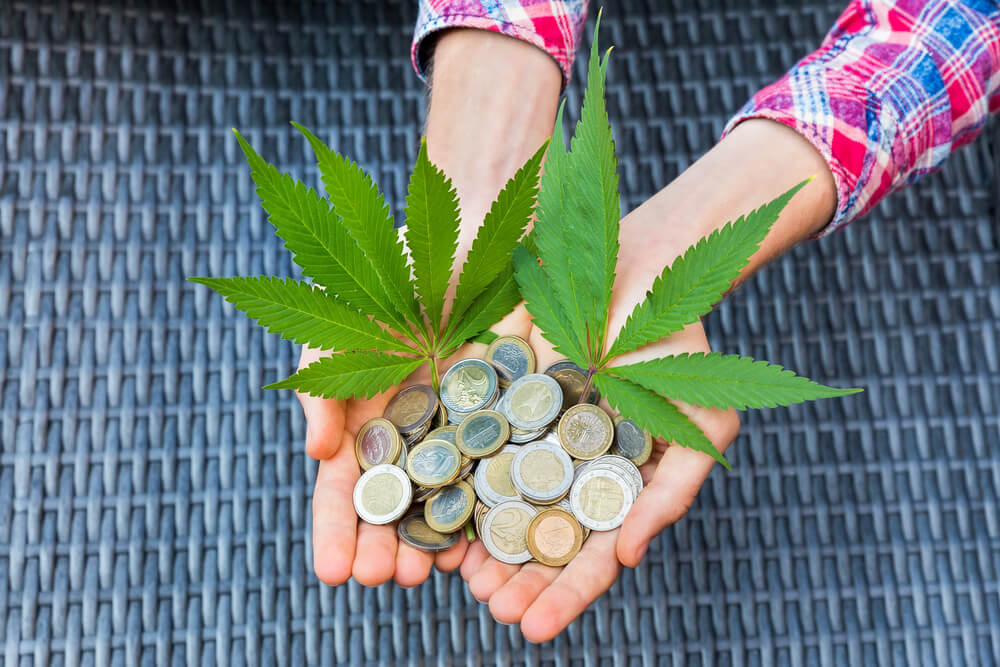Table of Contents

Weed and pets go together better than you might think. Well, in most situations anyway. As the conversation around marijuana continues to evolve, so too does our understanding of its effects on not just humans but our furry friends as well. With more states embracing legalization, pet owners are increasingly curious about how cannabis could impact their beloved animals.
One key concern is distinguishing between the potential risks and benefits associated with “Weed and Pets.” This topic has spurred a multitude of questions: Can weed be safe for pets? What about CBD products designed specifically for animals?
In 2024, the landscape of veterinary medicine is changing, driven in part by clinical trials focused on cannabis use in pets. These studies aim to shed light on how components like CBD can be used safely to manage conditions such as anxiety and pain in dogs and other animals.
Our blog post will guide you through understanding the intricate balance between keeping your pet safe and exploring the medicinal benefits that cannabis may offer them. Explore with us what every pet owner needs to know about marijuana toxicity, preventative measures, treatment options, and where research stands on CBD for pets.
Read on to discover more about weed and pets in 2024.
Understanding Cannabis
Cannabis is a plant that contains compounds like THC and CBD, which can be consumed in various forms such as smoking, vaping, or ingesting edibles. The effects of cannabis on pets differ from those on humans, affecting their behavior and overall health.
What is cannabis?
Cannabis, often referred to as marijuana among other names, is a plant known for its psychoactive properties. People use it in various forms such as smoking, vaporizing, in edibles, or as extracts.
Its effects can vary widely among users, from relaxation and euphoria to increased sensory perception and altered sense of time.
For pets, the interaction with cannabis significantly differs. Animals can be exposed through secondhand smoke or by ingesting cannabis products like edibles – a growing concern given the rise in marijuana and pets’ cases.
Safety around animals and understanding the potential health benefits of cannabis for dogs or other pets requires a careful approach. This includes considering CBD for animals derived from hemp plants low in THC (the compound primarily responsible for the drug’s psychoactive effects), which shows promise in veterinary medicine without high toxicity levels associated with THC-rich products.
How is it consumed?
Cannabis for pets can be consumed in various forms, including oils, treats, and capsules. Products like CBD-infused pet treats or oils are commonly used for administering cannabis to pets.
This allows for precise dosing and easy integration into a pet’s routine. Moreover, some veterinary professionals also recommend using specially formulated cannabis products designed specifically for animals to ensure their safety and well-being.
Many pet owners opt for CBD-infused products as they offer a convenient and controlled way to administer cannabis to their pets. Additionally, these products are available in different flavors and textures tailored towards animals’ preferences, making consumption more enticing for them.
Effects on humans vs. effects on pets
The effects of cannabis on humans and pets can vary significantly. While humans may experience psychological effects, such as euphoria or relaxation, pets are more susceptible to toxicity which can result in symptoms like vomiting, diarrhea, and loss of coordination.
Additionally, the dosage that is safe for humans may be toxic for pets due to differences in metabolism. It’s crucial for pet owners to understand these distinctions and take necessary precautions when it comes to cannabis exposure for their pets.
When considering the use of cannabis products around pets, it’s important to recognize that what might be beneficial for human health could pose potential risks to animals. For instance, while CBD has shown promise in managing pain and anxiety in both humans and pets, its long-term effects on animal health require further research before widespread use can be considered safe.
Risks of Cannabis Intoxication in Pets
Pets can become intoxicated by consuming marijuana, leading to symptoms such as lethargy, wobbliness, vomiting, and in severe cases, seizures. It’s crucial for pet owners to recognize the signs of cannabis intoxication and seek prompt veterinary care if they suspect their pet has ingested cannabis.
How do pets become intoxicated?
Pets become intoxicated with cannabis through accidental ingestion of marijuana or exposure to secondhand smoke from cannabis products. Due to their smaller size and weight, pets are more susceptible to the effects of THC, the psychoactive component in cannabis, which can lead to intoxication even at lower doses.
Ingestion of edibles such as brownies, cookies, or candies containing THC poses a significant risk to pets due to the high concentration of the substance. Additionally, pets may also become intoxicated by consuming dried marijuana flowers or leaves.
The rapid onset of symptoms in pets highlights the need for pet owners to be vigilant in preventing their animals from accessing cannabis products.
Pet poisoning cases related to marijuana have been on the rise due to increased availability and use of recreational cannabis products. According to data from the Pet Poison Helpline, there has been a notable increase in reported cases of pet marijuana toxicity over recent years.
This emphasizes the importance for pet owners and caregivers to secure all forms of cannabis and its derivatives away from their pets’ reach.
Signs and symptoms
Marijuana intoxication in pets can manifest through various signs and symptoms. These may include lethargy, vomiting, tremors, and even seizures. In severe cases, pets might exhibit changes in heart rate and blood pressure.
Additionally, dilated pupils and loss of coordination are common indicators of cannabis toxicity in animals. Owners should seek immediate veterinary care if their pet displays any of these symptoms.
Moving on to the next section about “Toxicity levels,” understanding the severity is crucial for effective treatment and prevention.
Toxicity levels
Marijuana toxicity in pets can vary depending on the amount ingested. Even small doses of THC, the psychoactive component of cannabis, can be harmful to animals. Dogs and cats have a higher sensitivity to THC than humans; thus, even a small amount consumed accidentally can lead to symptoms such as vomiting, incoordination, or even seizures.
The toxic effects depend on the concentration of THC in the product and the size and weight of the pet. It’s essential for pet owners to be aware of these factors when it comes to keeping cannabis products away from their pets.
Clinical trials for cannabis use in pets are still ongoing; however, there is already scientific evidence supporting its potential benefits. As attitudes towards marijuana change and regulations surrounding its use evolve, it becomes increasingly crucial for pet owners to understand how exposure could affect their furry companions.
Treatment and Prevention
Treating and preventing marijuana intoxication in pets involves early diagnosis, specialized care, and precautionary measures. To learn more about ensuring your pet’s safety, delve into our comprehensive guide on cannabis and pets.
How is intoxication diagnosed?
Veterinarians diagnose cannabis intoxication in pets through a combination of physical examination, history of exposure to cannabis, and clinical signs. Laboratory tests such as blood work and urine analysis can help confirm the presence of cannabinoids in the pet’s system.
Additionally, veterinarians may consider the pet’s symptoms alongside known toxic dose ranges for THC, the psychoactive component in cannabis. This comprehensive approach allows for accurate diagnosis and appropriate treatment tailored to each animal’s condition.
When diagnosing intoxication in pets, veterinarians look for specific signs such as disorientation, lethargy, dilated pupils, vomiting, and urinary incontinence which indicate potential ingestion of cannabis products by the animal.
Once diagnosed accurately, prompt medical attention is crucial to ensure effective intervention.
Treatment options
When pets are diagnosed with cannabis intoxication, treatment options may include inducing vomiting to remove the substance from their system, along with activated charcoal to absorb any remaining cannabis.
IV fluids can help flush out the toxins and rehydrate the animal. In severe cases, pets might require supportive care such as oxygen therapy or medications to control symptoms.
Moving on from treatment options for cannabis intoxication in pets, let’s delve into the potential benefits of using cannabis for managing anxiety and pain in animals.
Prevention methods
To prevent cannabis intoxication in pets, it’s crucial to store cannabis products securely out of reach. This includes edibles, oils, and other forms of the substance. Furthermore, pet owners should promptly dispose of any cannabis-related waste as animals may scavenge for these items.
Moreover, educating oneself about the signs and symptoms of intoxication is essential for early intervention. Finally, seeking immediate veterinary care if ingestion is suspected can greatly increase a pet’s chances of recovery.
Pet-safe prevention methods are vital in reducing the risks associated with cannabis exposure in animals. By implementing these measures diligently, pet owners can safeguard their beloved companions from potential harm related to cannabis consumption.
Benefits of Cannabis for Pets
Cannabis offers potential benefits for managing anxiety and pain in pets. It has shown promise in veterinary medicine as a possible treatment option for various medical conditions.
Managing anxiety and pain
Cannabis has shown promise in managing anxiety and pain in pets. Studies have indicated that CBD, a compound found in cannabis, may help alleviate symptoms of anxiety and stress in animals.
In fact, veterinary professionals are increasingly exploring the potential benefits of CBD and other cannabis-derived products for treating chronic pain and discomfort in pets. As research continues to advance, there is growing evidence supporting the use of cannabis as a viable option for addressing anxiety and pain management in animals.
Furthermore, preliminary findings suggest that CBD may offer potential therapeutic effects without causing psychoactive reactions commonly associated with THC, making it a promising avenue for pet owners seeking alternative treatments to address their pets’ anxiety and pain issues.
With appropriate dosing and professional guidance from veterinarians experienced in cannabis medicine, these products could provide valuable relief with minimal adverse effects. Given these developments, it’s clear that cannabis has the potential to significantly improve the well-being of pets struggling with anxiety or chronic pain.
Potential for medical use
Transitioning from managing anxiety and pain to potential medical use, it is worth noting that cannabis shows promise for various health conditions in pets. Clinical trials have indicated the potential of cannabis in treating ailments such as seizures, chronic pain, and inflammation in animals.
For instance, CBD has been found effective in managing epilepsy in dogs, with a significant reduction in seizure frequency observed during studies. Moreover, research suggests that cannabis compounds could be beneficial for addressing arthritis and joint pain in aging pets.
The evolving landscape of veterinary medicine also includes exploring the therapeutic benefits of cannabis for companion animals. In light of this progress, it’s crucial to consider the long-term effects and application of CBD and other cannabinoids to ensure safe integration into veterinary care practices.
Safety precautions and regulations
Cannabis use for pets is still largely unregulated, with no standard guidelines or dosages established. As of 2024, there are no clear federal regulations in place concerning the safety and administration of cannabis products to animals.
In addition to the lack of regulatory oversight, it’s important to note that some states may have their own specific regulations regarding cannabis use in veterinary medicine.
When considering using cannabis products for pets, it is advisable to consult a veterinarian who has experience with cannabis therapy for animals. It’s crucial for pet owners to meticulously research and understand the legal framework around cannabis use in their specific state before embarking on this treatment option.
Weed and Pets in 2024
In conclusion, understanding the effects of cannabis on pets is crucial in ensuring their safety and well-being. Recognizing the risks of intoxication and being aware of the signs and symptoms can help prevent harm to our furry friends. Weed and pets go together in most cases.
Additionally, exploring the potential benefits of cannabis for managing pet anxiety and pain highlights an area for further research and development. With careful consideration, we can strive to ensure that pets can potentially benefit from cannabis while avoiding any adverse effects.








